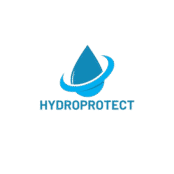Preparing Your Roof for Winter: A Guide to Hotmelt Waterproofing
As the chilly months approach, the significance of having a robust and watertight roof cannot be underestimated. For the owners of halls, warehouses, and other properties, ensuring that your roof is adequately prepared to face winter conditions is crucial. One effective method for enhancing your roof’s durability and insulation value is through hotmelt waterproofing. In this comprehensive guide, we’ll delve into why hotmelt roof waterproofing stands out as a superior option, its benefits, and how it compares to traditional waterproofing methods.
Understanding Hotmelt Roof Waterproofing
Hotmelt waterproofing is a cutting-edge method that combines innovation with practicality. This roofing solution involves the application of a hot, fully bonded waterproofing layer that provides a seamless and flexible membrane over the roof substrate. It’s favored for its durability, adaptability, and environmental benefits.
How Hotmelt Works
The process begins by heating the hotmelt material to a high temperature, allowing it to melt and adhere smoothly to the roofing surface. As the material cools, it forms a resilient layer that’s both flexible and impermeable, effectively sealing off any potential leaks.
Benefits of Hotmelt Technology
The advantages of hotmelt roof waterproofing are numerous:
– **Seamless Application**: Unlike other membrane systems that require seams, the heated application eliminates joints, reducing the risk of leaks.
– **Durability**: Once set, the membrane is highly resistant to a variety of stress factors such as temperature fluctuations and UV exposure.
– **Flexibility**: Particularly useful for complex roof geometries that are difficult to cover with sheet-based membranes.
– **Sustainability**: It can be made from recycled materials, reducing overall environmental impact.
Comparing Hotmelt to Traditional Waterproofing Methods
While there are multiple options available for roof waterproofing, hotmelt stands out for its unique qualities. Understanding how it stacks up against conventional options can help in making an informed decision.
Hotmelt vs. Bitumen-Based Roofing
Bitumen is often a go-to for waterproofing but comes with drawbacks:
– **Longevity**: Hotmelt typically outlasts bitumen due to its strong adhesion and resistance to cracking.
– **Maintenance**: Bitumen often requires more frequent inspections and repairs, whereas hotmelt is largely self-maintaining once installed.
Hotmelt vs. Liquid Applied Systems
Liquid systems share some traits with hotmelt but differ in key areas:
– **Installation**: While both offer seamless finishes, hotmelt’s thermal setting process creates a more robust membrane that withstands harsher conditions.
– **Performance in Cold Climates**: Hotmelt excels in cold weather applications due to its elasticity and adherence properties.
Why Hotmelt Waterproofing is Ideal for Winter Preparation
Given the extreme conditions of winter, a roof must be able to withstand relentless battering from snow, ice, and moisture. Hotmelt provides exceptional protective barriers that ensure integrity and safety through the toughest months.
Winter Weather Resistance
The hotmelt layer acts as a robust shield against water ingress and thermal loss, preserving the internal climate of buildings efficiently, which is crucial for managing heating costs during winter.
Enhanced Energy Efficiency
By providing excellent insulation, hotmelt not only protects from leaks but also reduces heat loss, contributing to lower energy consumption.
Implementation Considerations for Property Managers
For the successful application of hotmelt systems, certain factors need to be considered:
– **Professional Installation**: Due to the technical nature of hotmelt roofing, seeking qualified professionals ensures the integrity of the application.
– **Initial Costs vs. Long-term Benefits**: Although initial installation might appear expensive, the long-lasting benefits and reduced maintenance often translate to significant savings over time.
Conclusion: Is Your Roof Ready for Winter?
Ensuring that your roof is ready for winter is an essential maintenance task for property owners and managers. Hotmelt roof waterproofing emerges as a standout solution, offering unparalleled durability, efficiency, and protection against the harshest winter elements. With its numerous advantages over traditional methods such as bitumen and liquid applied systems, hotmelt waterproofing is an investment that promises peace of mind and long-term savings.
Summary
In conclusion, hotmelt roof waterproofing is a leading choice for securing roofing against winter’s challenges. With benefits like seamless application, impressive durability, and energy efficiency, it outperforms conventional methods. Property managers who opt for this modern solution can expect their roofs to remain in peak condition, with reduced maintenance needs and enhanced protection throughout winter and beyond.

